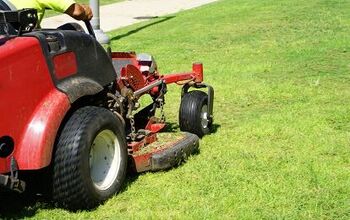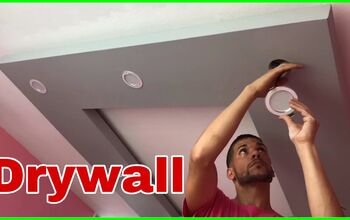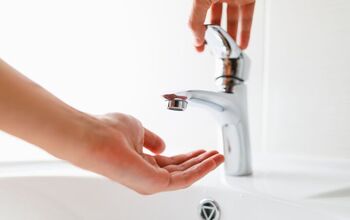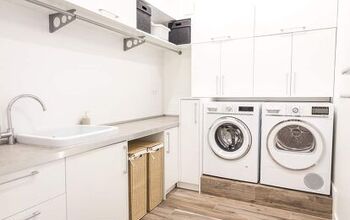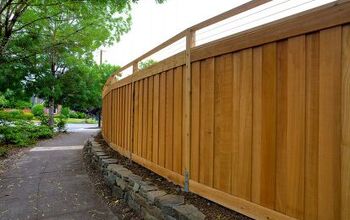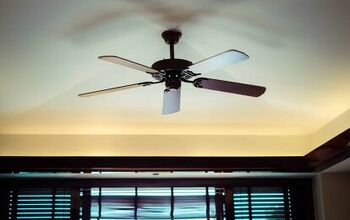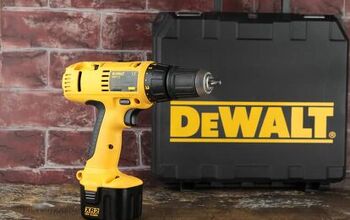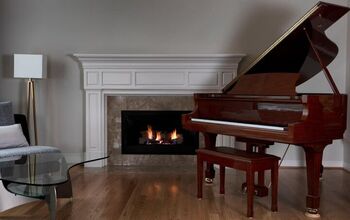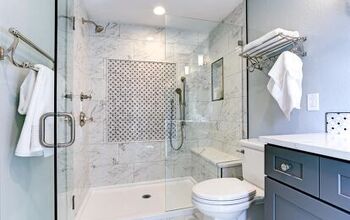How To Set Up An Outdoor Gym

The luxury of having enough space for a home gym is a goal for many people. Having an outdoor gym is an even rarer luxury, and while it can be done, it isn’t as simple as it sounds. You’re not alone if you’ve ever wondered how to set up an outdoor gym.
The best way to set up an outdoor gym is to pick a space with level ground that your neighbors can’t easily see. Next, pick some water-resistant free weights, resistance bands, and mats to protect them from the elements. Hang some tarps to provide privacy and protect yourself from the sun when you work out.
Ideally, you should keep a large bin nearby to store your outdoor gym equipment when it rains. Follow along as we explore how to set up an outdoor gym without spending a fortune.
How To Make A Backyard Gym
1. Designate Space
The hardest part of setting up an outdoor gym is picking the perfect spot. However, it doesn’t need to be too hard, as you can always move your outdoor gym setup as needed. At first, you should take a step back and visualize your yard with some basic gym equipment.
Consider several factors, such as privacy, sunlight exposure, and space. For example, you may find a perfect open space, but it may not be worth the trouble if your neighbors can easily see you. However, that doesn’t bother some people.
The most important factor is to consider whether or not you need the space for another purpose. Ideally, you should pick a spot that isn’t full of plants and weeds. Smooth landscaping is also important, so you can work out on a level surface.
2. Pick A Setup
What kind of outdoor gym do you want? Some people prefer covered outdoor gyms and even place equipment under gazebos. Others don’t worry about that and simply place gym equipment in an open backyard space.
In that case, you don’t need to do much to prepare your outdoor gym other than buying equipment. However, you may want to at least run a tarp or awning between tree branches. That way, you can exercise in the shade and get a little privacy.
3. Prepare The Ground
It’s a great idea to prepare the ground for your outdoor gym. After all, working out on uneven ground can throw your balance off and negatively impact your routine. Ideally, your backyard should be level, which you can do without professional help.
For example, you can fill lawn divots with compost, soil, and sand to make the ground more level. Otherwise, you can hire a landscaper to grade your yard if it’s out of control. That’s a great idea if your backyard has harsh slopes and many divots, as that takes heavy equipment to fix.
It’s also a great idea to lay outdoor flooring and mats to protect the ground. Some people pick spots without grass to avoid damaging the grass and soil. Otherwise, you can lay the mat on the ground and reseed the area when you eventually remove it months or years later.
4. Choose Your Equipment Wisely
You cannot simply use any type of gym equipment outside. After all, most gym equipment is either made of metal or contains electrical components. For example, you cannot safely place a treadmill outside without risking serious water damage.
You must also worry about sun damage as UV radiation can stain and weather gym equipment. Ideally, you should pick weights made of urethane or rubber to protect them from the elements. It’s also a great idea to invest in resistance bands, jump ropes, and pull-up bars.
Dip stations are also great for outdoor home gyms. However, most dip stations are made of metal, so you may need to bring it inside after your workout. Look out for words like “anti-rust” and “corrosion-resistant” when you buy outdoor gym equipment.
5. Create A Contingency Plan
No matter where you live, there’s always a chance that bad weather will strike. The last thing you want to do is find your gym equipment damaged from rain, snow, hail, heavy winds, or worse. That’s why it’s a great idea to have a contingency plan for when bad weather strikes.
For example, you can clear some indoor space in your garage or home to easily store your gym equipment during a storm. Alternatively, you can buy large waterproof storage bins to store your weights, bands, and mats in when it rains. If you hang a tarp to block the sun, it’s a good idea to take it down during heavy winds.
Otherwise, it may blow away during the storm, and it will be hard to recover it. Some people don’t worry about their outdoor gyms when it rains. You don’t have to worry either if you keep it simple and get waterproof or water-resistant gear.
Outdoor Gym Pros And Cons
Having a backyard gym is a luxury, but that doesn’t mean it’s without faults. It’s up to you to weigh the pros and cons before you invest in outdoor gym equipment.
Pros
Boosts Mental Health
Working out is already great for your mental health even when you do it indoors. However, exercising outdoors provides an extra boost because of the sunlight. Backyard workout sessions are great for alleviating depression and anxiety, no matter what time of year.
It Saves Money
Gym memberships are quite expensive, especially if you want to commit to years of working out. However, setting up a home gym in your backyard saves a fortune. Sure, you must still pay for weights, resistance bands, mats, and other equipment.
That said, it’s much cheaper than paying hundreds or thousands of dollars per year on a gym membership. Gym equipment is also quite durable, so you can count on your dumbbells lasting for years.
Make The Most Of Your Backyard
Most homeowners want to get out in the sun and spend more time in their yard. You can kill two birds with one stone by getting a great workout in your backyard. The influx of vitamin D the sun provides is great for you, especially if you get your recommended daily dose of calcium.
Cons
Your Yard May Feel Crowded
How big is your yard? It’s easy to worry about feeling cramped in your backyard if you have limited space and want to set up a gym. This can create a dilemma if you want to make the most of your backyard but don’t want to sacrifice your home gym.
Public Exposure
You’re not alone if you feel self-conscious about working out in an area where people can see you. That’s especially true if there isn’t much space between you and your neighbors' houses. Luckily, you can hang tarps and awnings to get some privacy, but that’s hard if you don’t have trees in your yard.
Limited Options
Unfortunately, you cannot keep some types of gym equipment in your yard. After all, you can’t keep an elliptical, treadmill, or any type of gym equipment that contains electric components outside. This can limit your workout routine, which many people consider a downside of an outdoor gym.
Summing It Up
To set up an outdoor gym, you must pick a spacious area and buy waterproof weights and resistance bands. You can hang sheets and tarps to give yourself some privacy from your neighbors when you work out. Never set up workout equipment that contains electrical components, such as a treadmill.
Related Guides:

Nick Durante is a professional writer with a primary focus on home improvement. When he is not writing about home improvement or taking on projects around the house, he likes to read and create art. He is always looking towards the newest trends in home improvement.
More by Nick Durante












